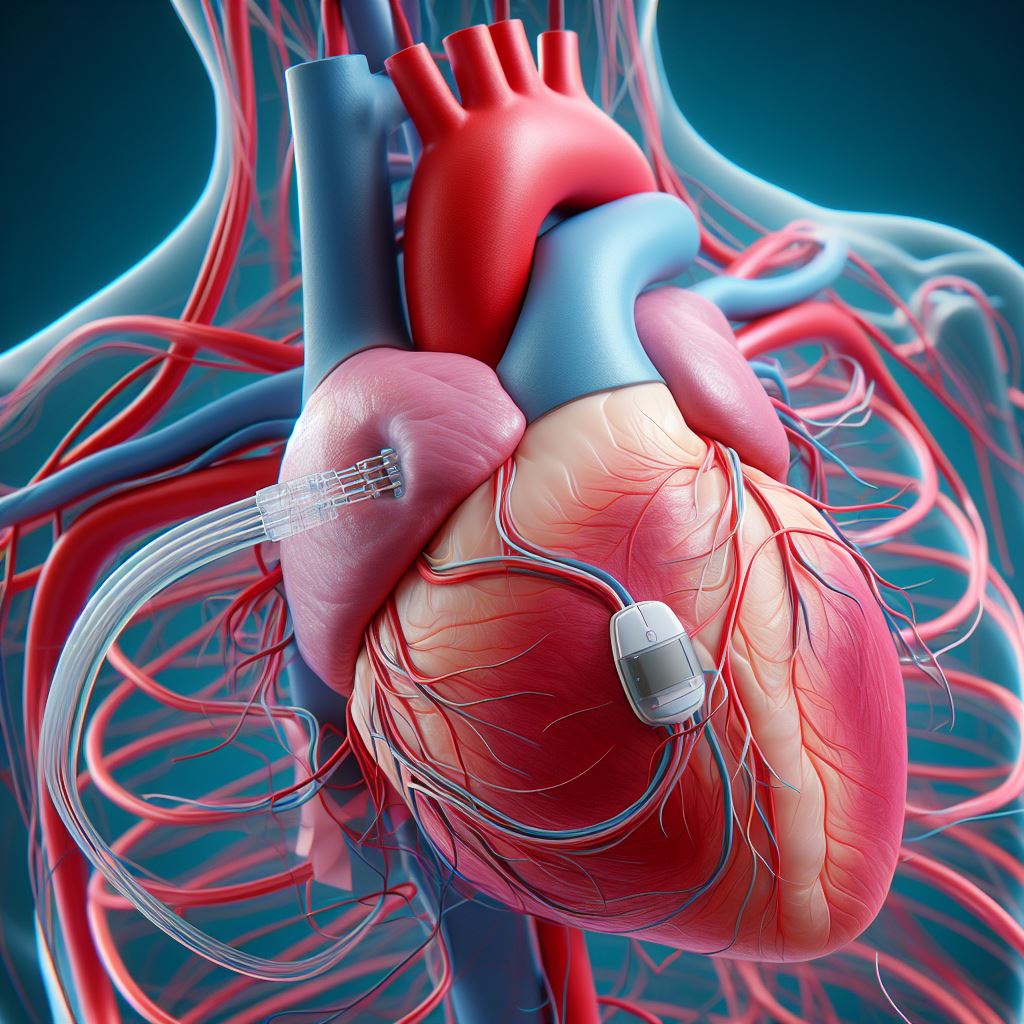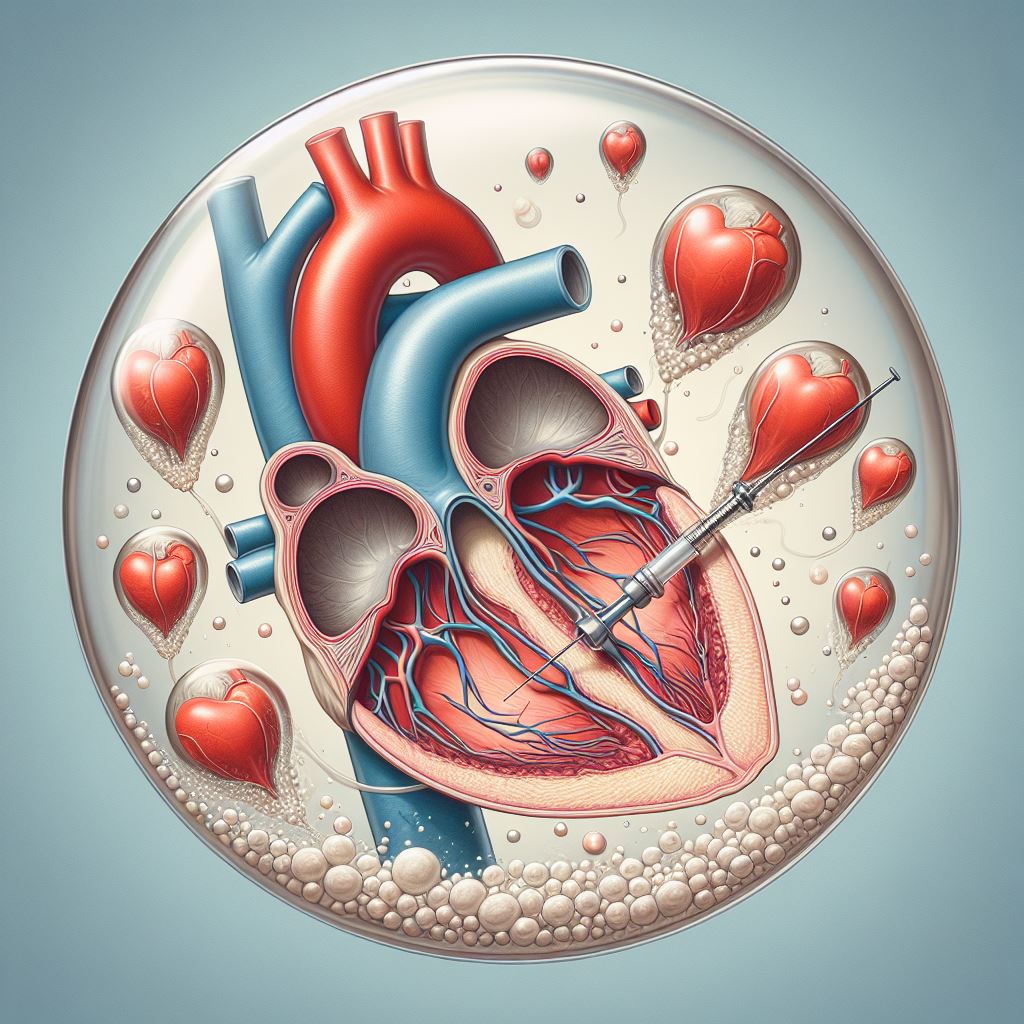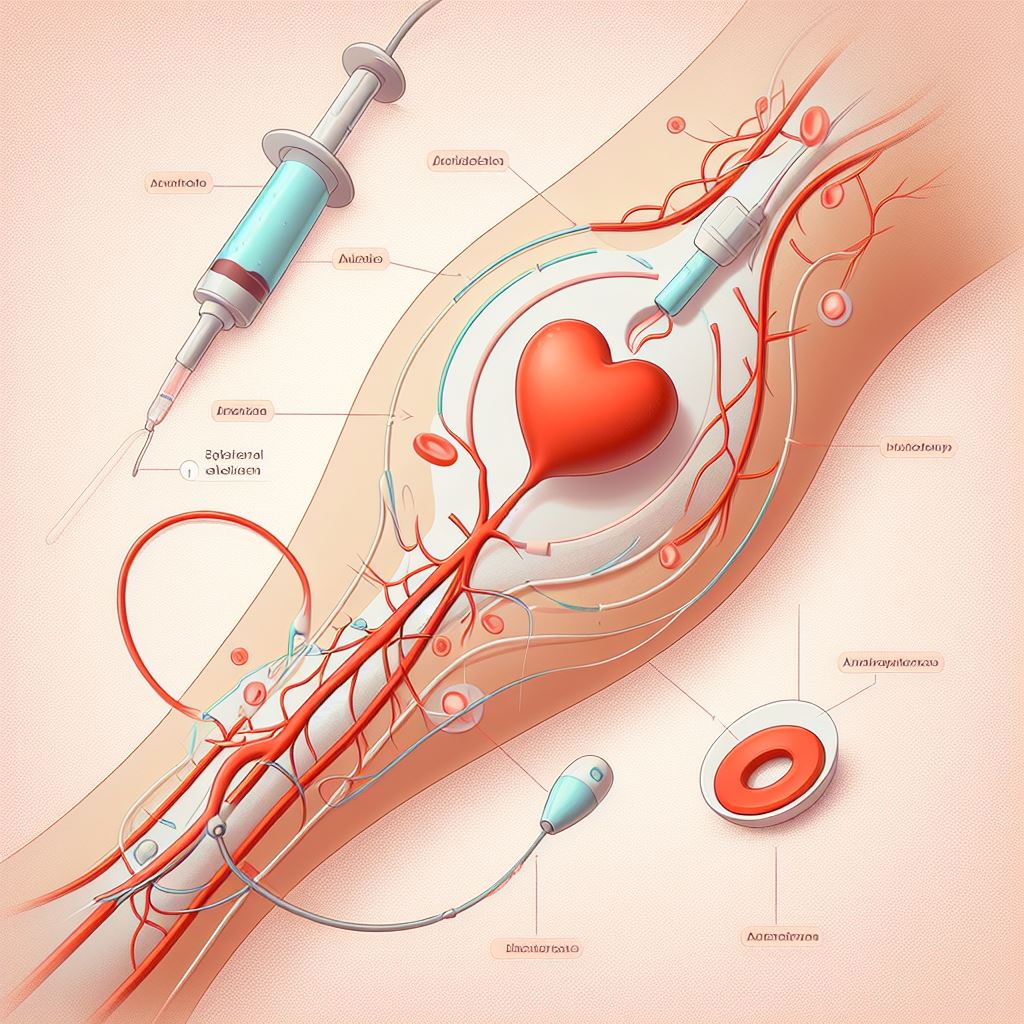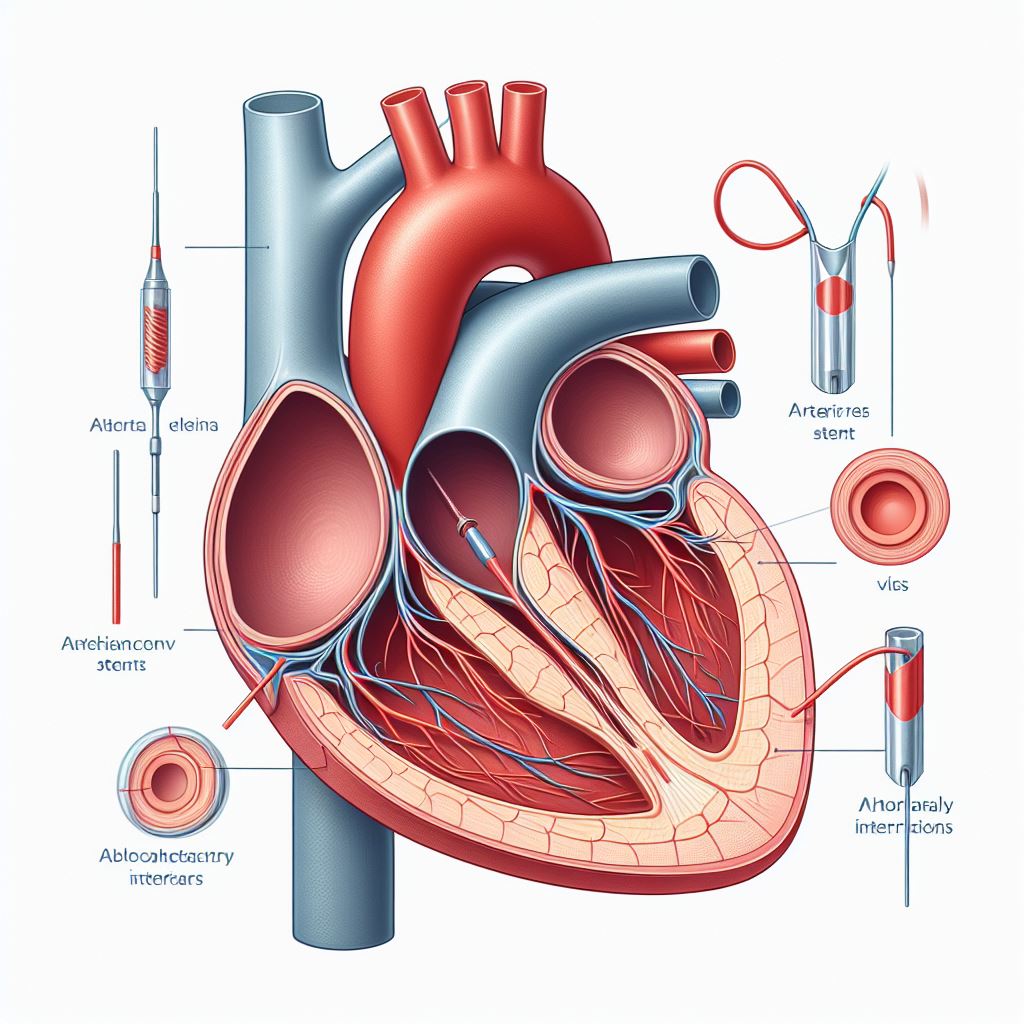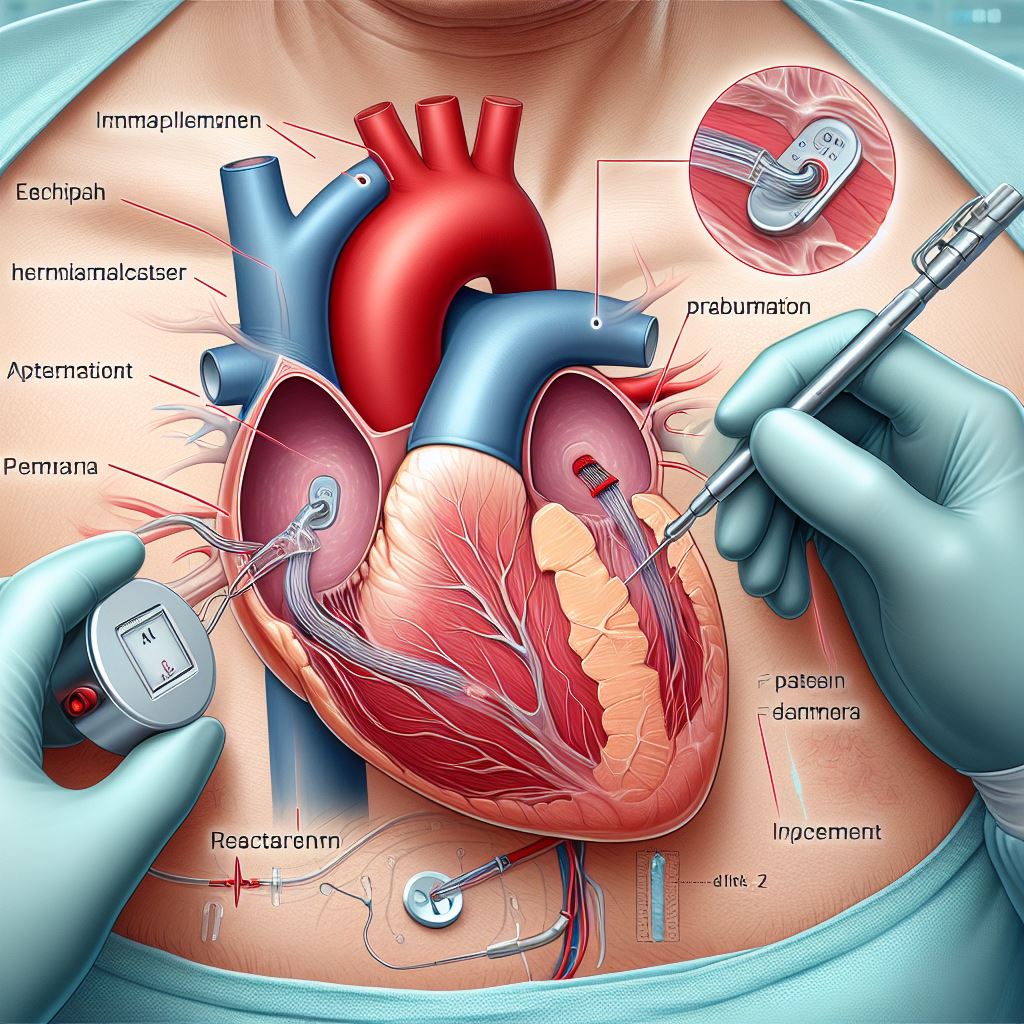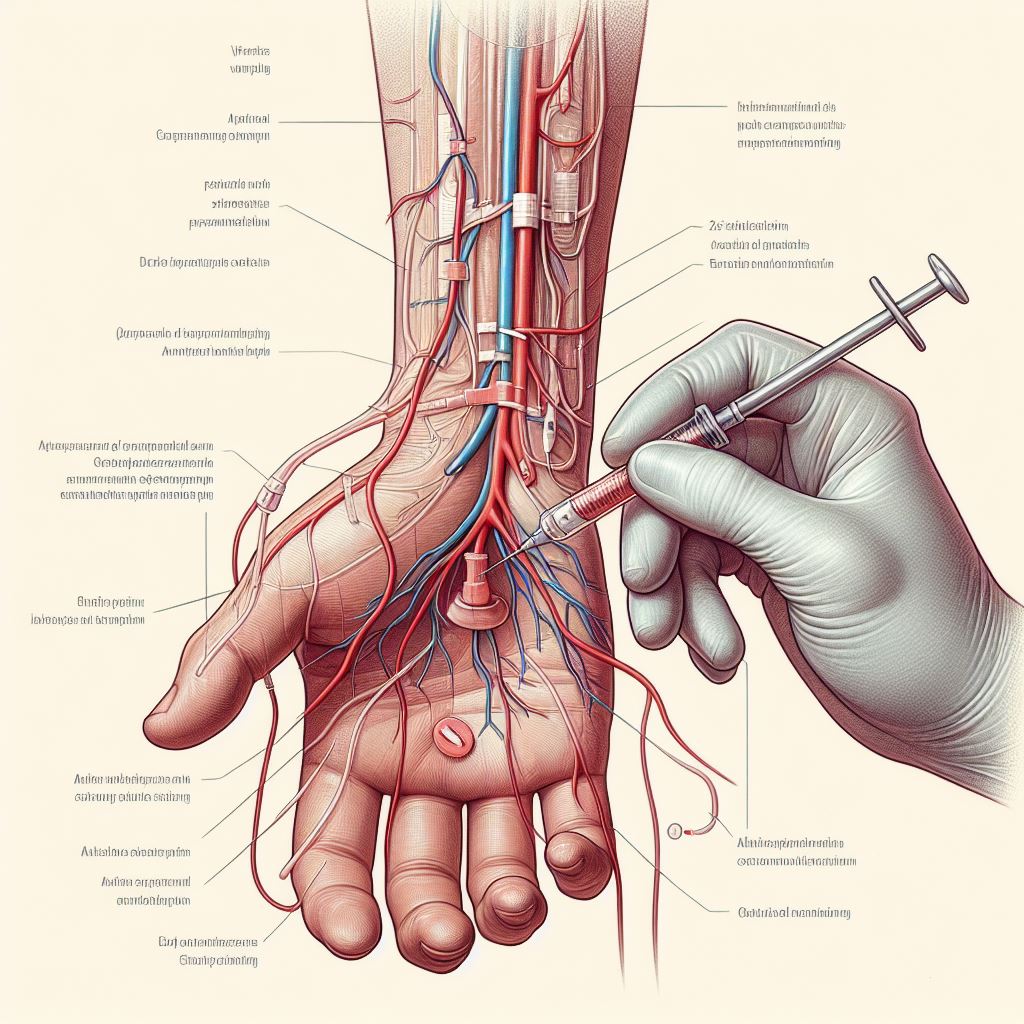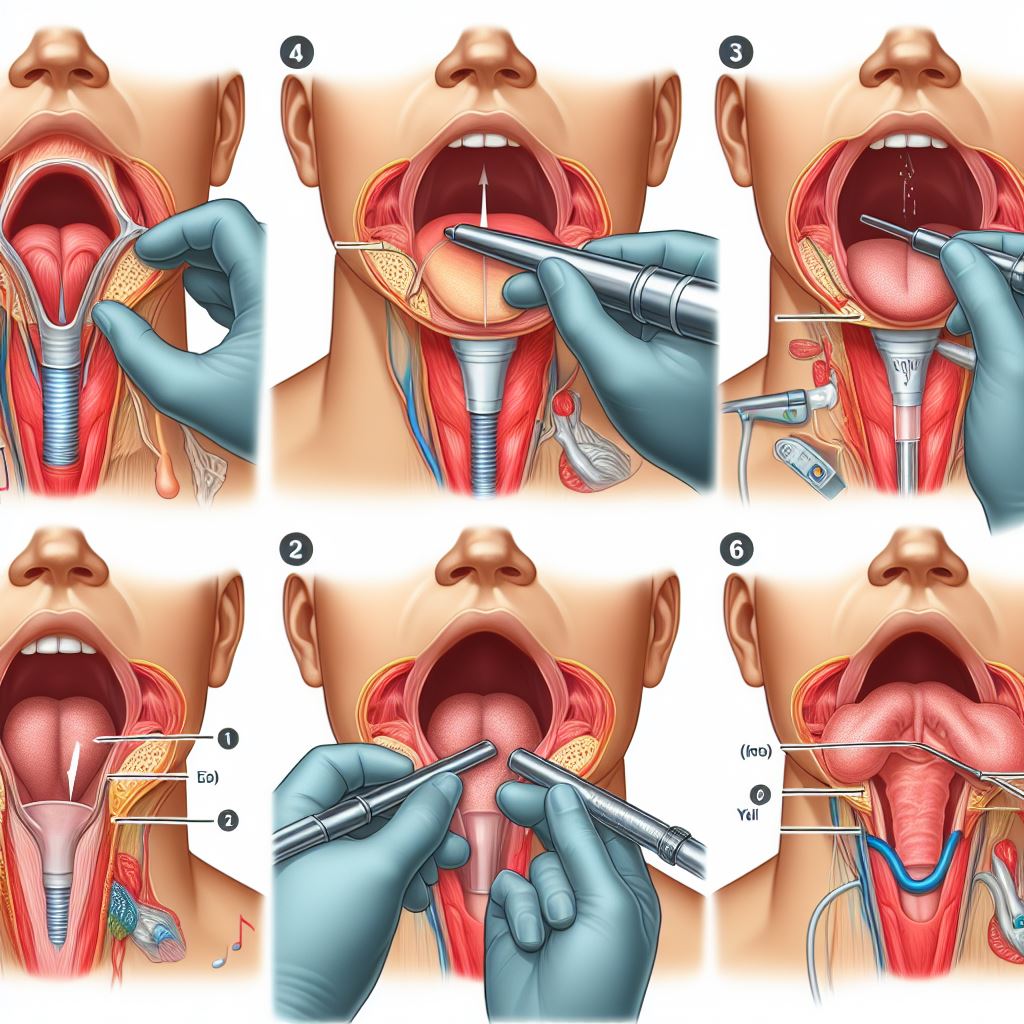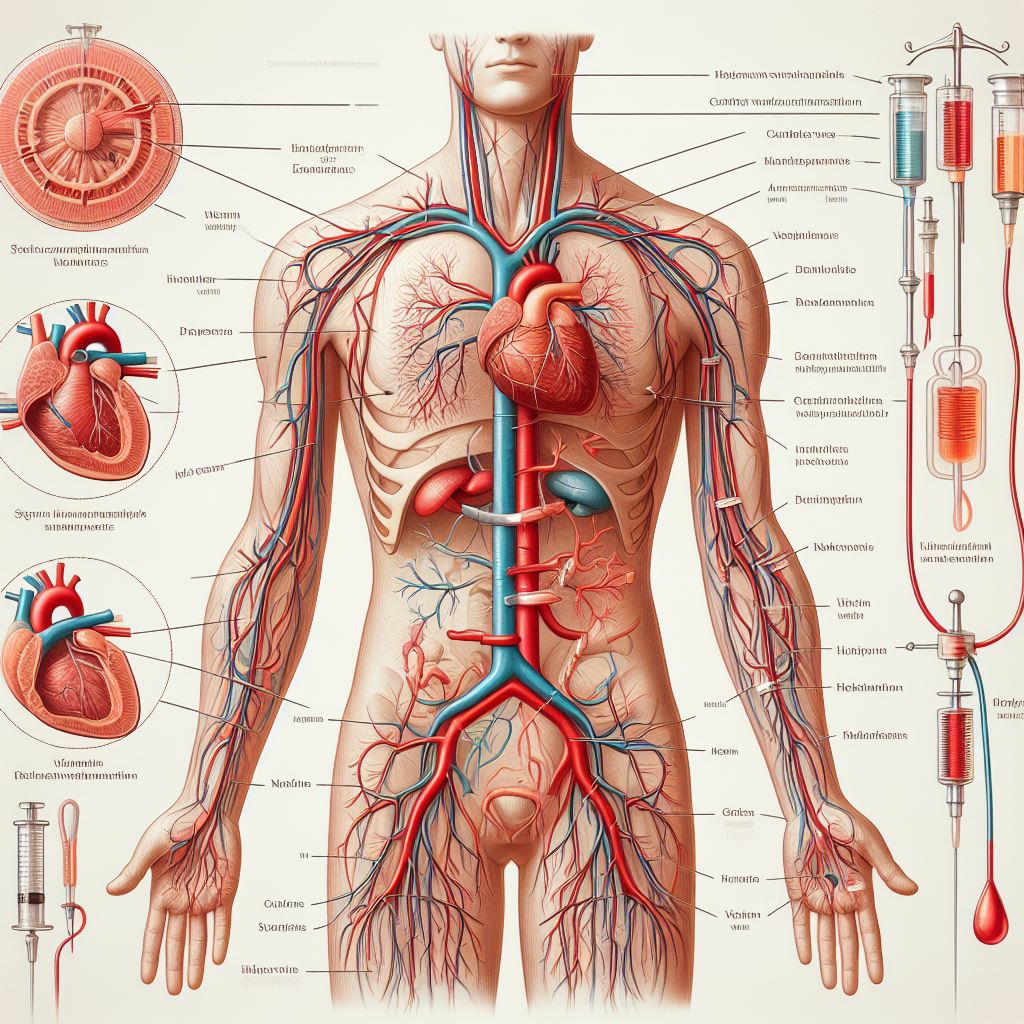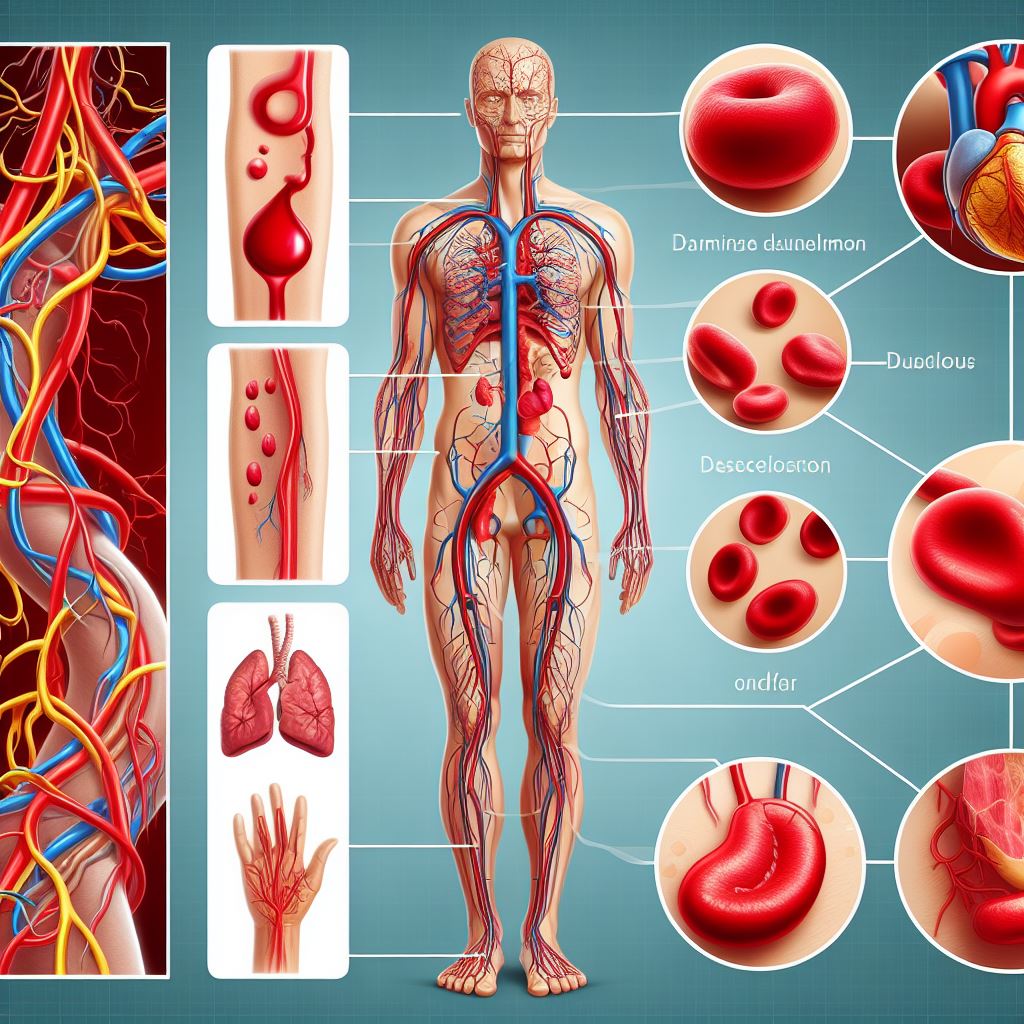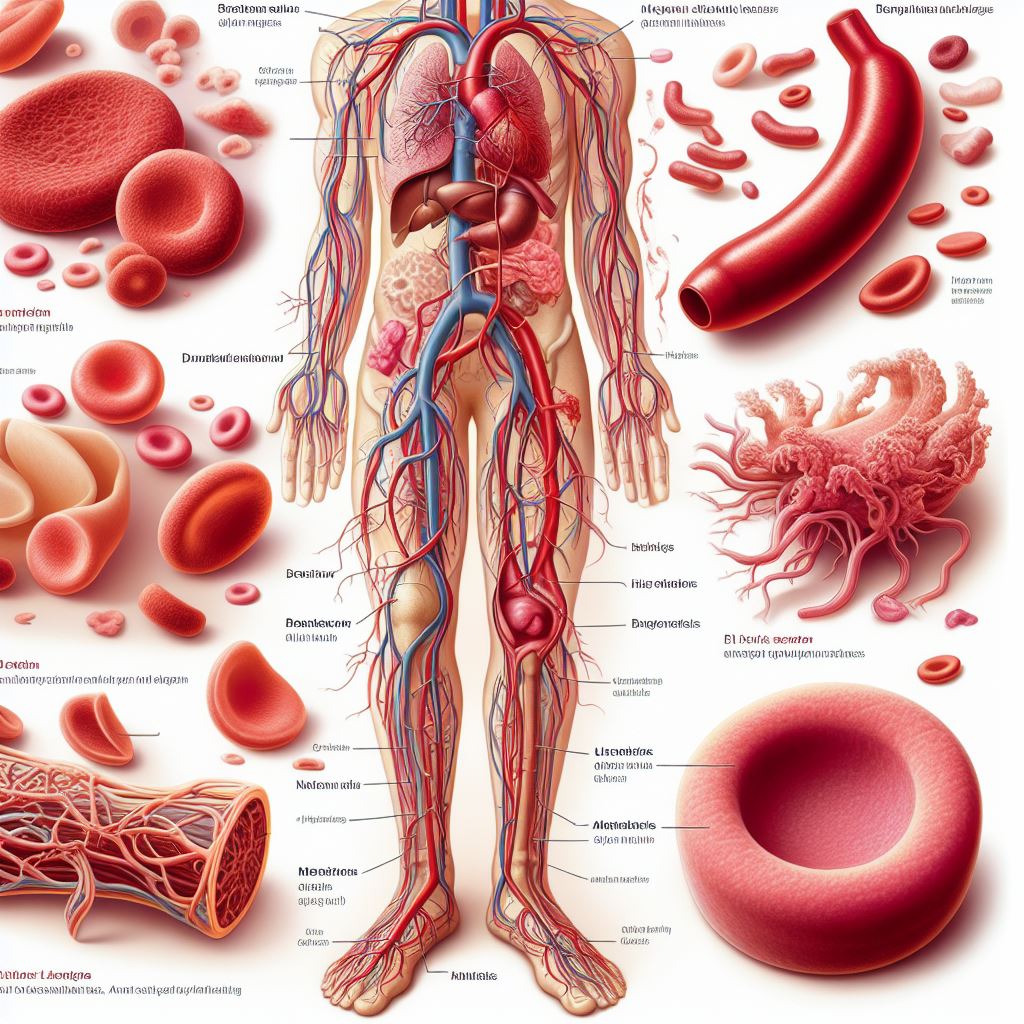
Diabetes
Diabetes
mellitus is a chronic metabolic disorder characterized by elevated blood
glucose levels, resulting from either insufficient insulin production or the
body's inability to effectively utilize insulin. Insulin, a hormone produced by
the pancreas, plays a crucial role in regulating blood sugar levels. There are
two main types of diabetes: Type 1, which is an autoimmune condition leading to
insulin deficiency, and Type 2, which typically involves insulin resistance.
As a cardiologist, understanding the impact of diabetes on
cardiovascular health is essential. Individuals with diabetes are at an
increased risk of developing heart disease, stroke, and other vascular
complications. The intricate interplay between diabetes and cardiovascular
conditions underscores the need for a comprehensive approach to patient care,
emphasizing prevention, early diagnosis, and effective management strategies.
Recognizing the symptoms, addressing risk factors, and collaborating with other
healthcare professionals are vital components of your role in ensuring optimal
cardiovascular health for individuals with diabetes.
Symptoms
Recognizing
the nuanced symptoms of diabetes is imperative, given its profound impact on
cardiovascular health. Diabetes mellitus, characterized by elevated blood
glucose levels, manifests with a spectrum of symptoms that warrant careful
consideration during patient assessments. Understanding these symptoms
facilitates early diagnosis and intervention, crucial elements in mitigating cardiovascular
risks associated with diabetes.
1. Frequent Urination: One cardinal symptom
of diabetes is increased frequency of urination (polyuria). Elevated blood
glucose levels lead to excess glucose in the kidneys, resulting in increased
urine production. Patients may complain of frequent trips to the bathroom,
particularly during the night, disrupting sleep patterns. This symptom is
indicative of the body's attempt to eliminate surplus glucose through urine.
2. Increased Thirst and Hunger: Polydipsia
(increased thirst) and polyphagia (increased hunger) are common manifestations
of diabetes. Inadequate insulin function prevents cells from absorbing glucose
effectively, leaving it circulating in the bloodstream. This prompts the body
to signal increased thirst as it attempts to dilute the concentrated blood.
Simultaneously, despite increased calorie intake, cells are deprived of energy,
leading to persistent hunger as the body craves more nutrients.
3. Unexplained Weight Loss: Despite an augmented
appetite, individuals with diabetes may experience unexplained weight loss. This
paradoxical phenomenon results from the body's inability to utilize glucose
efficiently for energy. Consequently, the body resorts to breaking down muscle
and fat, contributing to unintentional weight loss. This symptom, often
overlooked, underscores the metabolic imbalance associated with diabetes.
4. Fatigue: Chronic fatigue and weakness are
prevalent symptoms in diabetes. The inability of cells to access glucose, their
primary energy source, results in persistent tiredness. Patients may describe a
lack of energy, even after adequate rest, impacting daily activities and
overall quality of life. Recognizing fatigue as a potential indicator of
diabetes is crucial for timely intervention.
5. Blurred Vision: Diabetes can affect
the eyes, leading to changes in vision. High blood sugar levels can cause fluid
shifts in the eyes, leading to blurred vision. Individuals may notice
difficulty focusing or sudden changes in their eyesight. Regular eye
examinations are essential for detecting diabetes-related eye complications
early on.
6. Slow Wound Healing: Impaired blood
circulation and compromised immune function associated with diabetes can impede
the healing of wounds and infections. Patients may report slow healing of cuts,
bruises, or infections, indicating potential microvascular complications.
Monitoring and addressing these issues promptly is vital to prevent more severe
complications.
7. Numbness and Tingling: Peripheral
neuropathy, a common complication of diabetes, can manifest as numbness,
tingling, or pain, particularly in the extremities. The prolonged impact of
high blood sugar levels on nerve function can result in sensory abnormalities.
Peripheral neuropathy is a significant concern as it poses challenges in wound
perception and increases the risk of foot ulcers.
8. Recurrent Infections: Individuals with
diabetes are more susceptible to infections due to compromised immune function.
Recurrent infections, particularly in the urinary tract, skin, or gums, may be
indicative of underlying diabetes. Heightened awareness of infection
susceptibility is crucial for prompt intervention and prevention of
complications.
emphasizing
preventive measures is paramount in managing the intersection between diabetes
and cardiovascular health. Here are key strategies to help prevent the onset of
diabetes and its associated complications:
·
Balanced Diet: Encourage
patients to adopt a diet rich in fruits, vegetables, whole grains, and lean
proteins. Emphasize portion control and limit the intake of processed foods,
sugary beverages, and high-calorie snacks.
·
Regular Exercise: Promote
physical activity as an integral part of diabetes prevention. Regular exercise
improves insulin sensitivity, helps maintain a healthy weight, and contributes
to overall cardiovascular health.
·
Weight Management:
Maintaining a healthy weight is a cornerstone of diabetes prevention. Work with
patients to set realistic weight goals and provide support in achieving and
sustaining a healthy body mass index (BMI).
·
Blood Pressure Control: Managing
blood pressure is crucial, as hypertension is a common comorbidity in
individuals with diabetes. Advocate for lifestyle modifications and, if
necessary, prescribe antihypertensive medications to maintain optimal blood
pressure levels.
·
Regular Monitoring: Encourage
routine health check-ups, including blood glucose screenings, especially for
individuals with a family history of diabetes or those at higher risk due to
other factors.
·
Lifestyle Modifications: Address
modifiable risk factors such as smoking and excessive alcohol consumption.
Smoking cessation and moderation in alcohol intake contribute to overall
cardiovascular well-being.
Prevention
As
a cardiologist, advocating for prevention is a cornerstone of your role in
managing diabetes and safeguarding cardiovascular health. Diabetes, a chronic
condition characterized by elevated blood glucose levels, significantly
increases the risk of cardiovascular complications. Implementing preventive
measures is not only essential in averting the onset of diabetes but also in
reducing the associated cardiovascular risks. Here's a comprehensive guide on
diabetes prevention:
Balanced
Diet:
Encourage
patients to adopt a balanced and nutritious diet as a fundamental step in
diabetes prevention. Emphasize the consumption of fruits, vegetables, whole
grains, and lean proteins. Portion control is crucial, and limiting the intake
of processed foods, sugary beverages, and high-calorie snacks helps regulate
blood glucose levels. Collaborate with nutritionists to tailor dietary
recommendations to individual patient needs.
Regular
Exercise:
Physical
activity is a powerful tool in preventing diabetes and promoting cardiovascular
health. Regular exercise enhances insulin sensitivity, allowing cells to
efficiently utilize glucose. Recommend at least 150 minutes of
moderate-intensity aerobic activity per week, coupled with muscle-strengthening
exercises. Tailor exercise plans to accommodate patients' preferences, fitness
levels, and any existing medical conditions.
Weight
Management:
Maintaining
a healthy weight is pivotal in diabetes prevention. Excess body weight,
especially around the abdomen, is a significant risk factor for insulin
resistance. Work collaboratively with patients to establish realistic weight
goals, offering guidance on calorie intake, exercise routines, and lifestyle
modifications. A multidisciplinary approach involving dietitians, physical
therapists, and behavioral health specialists can enhance the effectiveness of
weight management strategies.
Blood
Pressure Control:
Hypertension
often coexists with diabetes, escalating cardiovascular risks. Advocate for
routine blood pressure monitoring and employ strategies to maintain optimal
levels. Lifestyle modifications, including sodium restriction, regular
exercise, and stress management, play integral roles. If necessary, prescribe antihypertensive
medications tailored to individual patient needs.
Regular
Monitoring:
Early
detection is a linchpin in diabetes prevention. Encourage routine health
check-ups, incorporating blood glucose screenings, particularly for individuals
with a family history of diabetes or those with predisposing factors.
Identifying prediabetes allows for timely intervention through lifestyle
modifications and targeted preventive measures.
Lifestyle
Modifications:
Addressing
modifiable risk factors contributes to overall cardiovascular well-being.
Support patients in smoking cessation efforts, emphasizing the detrimental
impact of smoking on diabetes and heart health. Additionally, moderate alcohol
consumption is advisable, with guidance on potential interactions with diabetes
medications.
Empower
patients with the knowledge and tools to make informed lifestyle choices.
Utilize educational resources, support groups, and personalized counseling to
reinforce the importance of preventive measures. Collaborate with diabetes
educators, primary care physicians, and other specialists to create
comprehensive care plans that encompass both cardiovascular and metabolic
health.
Diagnosis
In
the realm of cardiology, a nuanced understanding of the diagnostic process for
diabetes is indispensable, considering its intricate link to cardiovascular
health. The diagnosis of diabetes involves a combination of clinical
evaluation, laboratory tests, and a comprehensive assessment of risk factors.
As a cardiologist, incorporating these aspects into your practice enhances the
holistic care of patients at risk or already affected by diabetes.
1. Fasting Blood Sugar Test: A fundamental
component of diabetes diagnosis is the fasting blood sugar test. This involves
measuring blood glucose levels after an overnight fast. Elevated fasting
glucose levels (usually above 126 mg/dL) may indicate diabetes. However,
results must be interpreted alongside clinical symptoms and other risk factors.
2. Oral Glucose Tolerance Test (OGTT): The OGTT
provides a dynamic assessment of the body's response to glucose. After fasting,
patients consume a glucose solution, and blood sugar levels are monitored at
intervals. Elevated glucose levels two hours after ingestion suggest impaired
glucose tolerance. This test is particularly valuable in identifying
prediabetes and gestational diabetes.
3. Hemoglobin A1c Test: The Hemoglobin A1c
(HbA1c) test offers a longer-term view of blood sugar control. It measures the
average blood glucose levels over the past two to three months by assessing the
percentage of hemoglobin that has glucose attached to it. HbA1c levels above
6.5% are indicative of diabetes. This test is valuable for long-term monitoring
and treatment adjustments.
4. Random Blood Sugar Test: While fasting and
OGTT are standard, random blood sugar tests taken at any time can also
contribute to diagnosis. A blood glucose level above 200 mg/dL, coupled with
classic symptoms, may prompt further investigation.
5. Glycated Albumin and Fructosamine Tests: In
specific cases, healthcare providers may utilize glycated albumin and
fructosamine tests. These assess short-term glycemic control and can be useful
in situations where HbA1c may be less reliable.
6. Risk Assessment: Beyond laboratory
tests, assessing risk factors is integral to the diagnostic process. A
comprehensive evaluation considers family history, age, ethnicity, and other
health conditions. The identification of risk factors informs not only the
diagnosis but also the formulation of personalized treatment and prevention
plans.
Treatment
Your
role in the treatment of diabetes is pivotal, considering the profound impact
of this metabolic disorder on cardiovascular health. Collaborative care with
endocrinologists, primary care physicians, and other specialists is essential
to address both diabetes and its associated cardiovascular risks. The
multifaceted approach to diabetes treatment encompasses lifestyle
modifications, medication management, and ongoing patient education.
1. Lifestyle Modifications: Encourage patients
to make sustainable lifestyle changes that promote overall health and
specifically target blood glucose control. Emphasize the importance of a
balanced diet, rich in fiber, fruits, vegetables, and lean proteins. Encourage
portion control and discourage excessive consumption of sugary and processed
foods. Physical activity is a cornerstone – advocate for regular exercise
tailored to individual capabilities and preferences. Weight management plays a
crucial role, and patients benefit from ongoing support and guidance in
achieving and maintaining a healthy weight.
2. Medication Management: For many individuals
with diabetes, medication is a crucial component of effective management. The
choice of medication depends on the type of diabetes, individual health
factors, and the overall treatment plan. Medications may include:
·
Insulin: Essential for individuals with type 1 diabetes and sometimes
necessary for those with type 2 diabetes when other medications are
insufficient.
·
Oral Medications: A variety of oral
medications, including metformin, sulfonylureas, and others, are prescribed to
enhance insulin sensitivity, reduce glucose production in the liver, and manage
blood sugar levels.
·
Injectable Medications: GLP-1 receptor
agonists and other injectable medications may be recommended to aid in blood
sugar control, particularly for type 2 diabetes.
3. Continuous Glucose Monitoring (CGM) and Self-Monitoring: Advocate
for the use of continuous glucose monitoring systems and regular
self-monitoring of blood glucose levels. These tools empower patients to
actively participate in their care, enabling real-time adjustments to
medication, diet, and lifestyle.
4. Cardiovascular Risk Management: Given
your expertise in cardiology, emphasize the importance of managing
cardiovascular risk factors alongside diabetes treatment. Monitor and control
blood pressure, and cholesterol levels, and promote smoking cessation. Collaborate
with healthcare professionals to develop a comprehensive cardiovascular risk
management plan.
5. Patient Education and Support: Provide ongoing
education to empower patients in understanding their condition, recognizing
symptoms, and making informed decisions. Offer resources, support groups, and
counseling to address the emotional and psychological aspects of living with
diabetes. Patient engagement is crucial for adherence to treatment plans and
sustained lifestyle modifications.
6. Regular Follow-Up: Establish a regular
follow-up schedule to assess treatment effectiveness, monitor blood glucose
levels, and address any emerging concerns. Collaborate closely with the
healthcare team to make necessary adjustments to the treatment plan based on
individual responses and changing health dynamics.
Causes of
Diabetes
Understanding
the underlying causes of diabetes is crucial for effective management and
prevention. As a cardiologist, recognizing the intricate relationship between
diabetes and cardiovascular health necessitates insight into the various
factors contributing to the onset of this metabolic disorder.
1. Genetics: Genetic predisposition plays a
significant role in the development of diabetes. Individuals with a family
history of diabetes are at a higher risk, indicating a hereditary component.
Specific gene variants may influence insulin production, secretion, or the
body's response to insulin, contributing to the genetic basis of diabetes.
2. Insulin Resistance: In many cases of
type 2 diabetes, insulin resistance is a central factor. Insulin, produced by
the pancreas, facilitates the uptake of glucose by cells for energy. In insulin
resistance, cells become less responsive to insulin, leading to elevated blood
glucose levels. Factors such as obesity, sedentary lifestyle, and genetic
factors contribute to the development of insulin resistance.
3. Autoimmune Response (Type 1 Diabetes): Type 1
diabetes is an autoimmune condition where the immune system mistakenly attacks
and destroys insulin-producing beta cells in the pancreas. The exact cause of
this autoimmune response is not fully understood, but both genetic and
environmental factors are believed to contribute. Viral infections and exposure
to certain environmental triggers may initiate the autoimmune destruction of
pancreatic cells.
4. Pancreatic Dysfunction: Damage or
dysfunction of the pancreas can disrupt insulin production, contributing to
diabetes. Pancreatic diseases, such as chronic pancreatitis or pancreatic
cancer, can compromise the organ's ability to produce and release insulin
effectively.
5. Hormonal Changes: Certain hormonal
changes and conditions can contribute to diabetes. Conditions such as
polycystic ovary syndrome (PCOS) in women are associated with insulin
resistance, increasing the risk of type 2 diabetes. Hormonal fluctuations
during pregnancy, as in gestational diabetes, can also impact insulin
sensitivity.
6. Lifestyle Factors: Modifiable lifestyle
factors significantly contribute to the development of diabetes. Sedentary
lifestyles, unhealthy dietary habits, and excessive calorie intake, especially
from sugary and processed foods, contribute to obesity and insulin resistance.
Physical inactivity exacerbates these factors, creating an environment
conducive to diabetes.
7. Age and Ethnicity: Age is a
non-modifiable risk factor, and the risk of diabetes generally increases with
age. Additionally, ethnicity plays a role, with certain populations, such as
African Americans, Hispanic Americans, and Native Americans, having a higher
predisposition to diabetes.
8. Gestational Factors: Gestational diabetes
occurs during pregnancy and is linked to hormonal changes and insulin
resistance. Women who develop gestational diabetes are at an increased risk of
developing type 2 diabetes later in life.





